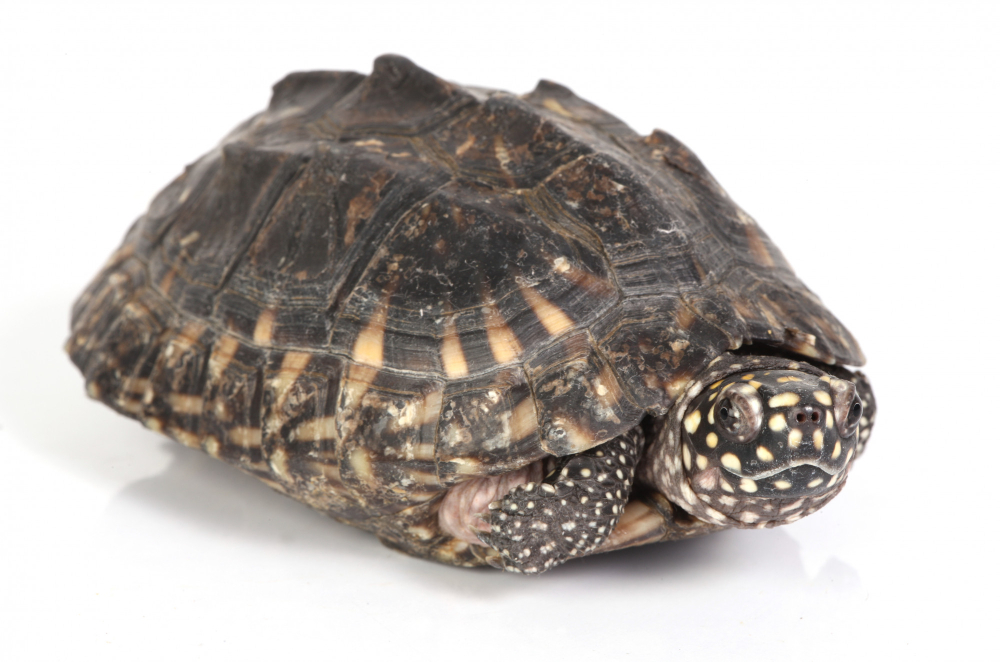
Like all reptiles, turtles shed their skin. Even their shells are shed. Many people get confused when they see scutes fall off of their turtle’s shell.
This is when your turtle starts shedding flaky white material. This is your turtle’s skin shedding.
So, Why Is My Turtle Shedding White Skin?
You will see white flaky material around the neck and limbs of a turtle when it sheds. This is normal shedding, so don’t worry. Baby turtles shed a lot during their growth, but as they age, this frequency decreases.
While growing, turtles shed their skin. It is similar to snakes that shed their skin to grow their bodies. Experts say turtles shed their skin to cleanse themselves. Let me explain.
They spend the majority of their time in water or mud in the wild. They accumulate bacteria, parasites and algae on their shells. To keep their bodies clean, turtles must shed.
Turtles also shed their skin for the above reason, which is to make room for their growing bodies. This is common for reptiles as well as invertebrates. They will shed their skin and grow new ones.
Why Is My Turtle Shedding Excessively?
Before you jump to the causes, it is important to be able distinguish between excessive or normal shedding.
There may be many strands (4 to 6) of old skin that stick to the turtle’s body during shedding. These long shreds may give the appearance that your turtle is excessively shedding. This is normal.
Let me now tell you about turtles that shed excessively.
Here’s What does excessive shedding look like?
5 Reasons Your Turtle Is Shedding White Skin Excessively
There are several factors to consider if your turtle is excessively shedding. These include: high ammonia, overconsumption and high temperatures, fungal infections, vitamin A deficiencies, and a rise in ammonia.
Let’s take a look at these things.
Spike In Ammonia Levels
A turtle can shed excessively if it is exposed to ammonia. The frequency and duration of shedding will rise dramatically as a result.
An old filter could be the cause of the ammonia spike in your turtle tank.
Turtles can be messy pets. They can make your tank 10 times dirtier than fishes. You should be monitoring the water parameters and filtering equipment regularly.
Overeating
Turtles grow faster when they eat too much. A bigger body will require more skin. Turtles shed excessively as their bodies produce new skin to accommodate the growing body.
You should be careful about how much you give them. It is a good rule of thumb to feed them as much as they can finish in 15 minutes.
Baby turtles will always want more so don’t give in to their adorable antics.
High Temperature
Overheating your turtle tank can cause excessive shedding. The temperature of the basking area should be between 85 and 90 degrees Fahrenheit. The water temperature should range from 75 to 85° Fahrenheit.
Fungal Infections and Diseases
Turtles are susceptible to fungal infections. It is more common to see scutes than skin. The fungal infection can spread quickly and cause the turtle’s skin to fall off.
Your turtles may also shed skin and scutes due to wounds or diseases such as shell rot. This problem should be taken seriously and treated immediately by a veterinarian.
Vitamin A Deficiency
Did you know that turtles can also shed excessively if they are deficient in vitamin A? Vitamin A deficiency can cause skin peeling.
You may also see visible signs such as raw skin or ulcers.
You can feed turtles carrots, sweet potatoes and squash to meet their vitamin A needs.
Here’s a vitamin I use to reinforce my turtles.
Should You Help Your Turtle With Shedding?
These white skin strands can look appealing and be easy to remove from the turtle’s skin. However, you should not force turtles to shed their skin. It is better to let them be and allow nature to take its course.
When raising a turtle, you need to ensure that the water is correct, they are fed properly, and there is enough space for them to swim and bask. You should let turtles shed naturally.
Many turtle owners use sticky scutes to help their turtles shed. However, if this is your first time peeling scutes from a turtle, you should not attempt it.
You should not interfere with turtles shedding if they shed excessively. Most cases of excessive shedding are caused by a rise in ammonia levels, vitamin-A deficiency, or high temperatures. These three parameters should be maintained and monitored to ensure that your turtle doesn’t shed.
How Often Do Turtles Shed Skin?
Turtles shed their skin every one to two weeks. Because they live in water, turtles are more susceptible to parasitic infections. They shed often to stay healthy.
When turtles come out of hibernation, they shed a lot. This is when they need to absorb the most heat. They will also shed their skin and scutes in order to absorb as much heat possible.
Final Words: Why Is My Turtle Shedding White Skin
Reptiles shed when they are growing. When they grow, reptiles shed. Excessive shedding can pose a problem if it is due to overheating or ammonia.
Because their bodies naturally remove infected skin, fungus-infected turtles are also known to shed their skin.
Also, ensure that your turtles get enough vitamin A through their diet. Excessive shedding of white skin can also be caused by a lack of vitamin A.
Responsible turtle owners should be aware of all the factors that affect turtle skin health and ensure your turtle is as healthy as possible.